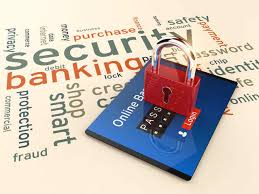There are various ways in which fraudsters may try to deceive you into giving them your personal and security details. Here are some of the common online banking frauds that are prevalent.
Trojan: Trojan is an internet virus that gets installed in your computer while browsing internet or downloading from unsecured websites. Once a Trojan is installed in your system the malware monitors your online activities and reads/steals sensitive information such as passwords and credit card numbers etc.
Phishing Emails: As the name suggests, these are fraudulent emails, claiming to come from the authorised channel. Further explaining the Phishing scams, Deepak Kinger, Vice President, Banking and Financial Services, VirtusaPolaris, a financial technology firm serving leading software vendors in banking & financial services, said, “Phishing involves installing ‘malware’ or ‘spyware’ that reads sensitive client information including client details, passwords and PINs at the point of contact on channel. This channel could be an ATM, internet banking site, mobile banking app or the payment interface on an ecommerce site.”
Money mule / Additional income email scam: Money Mules are unaware victims, invariably job-seekers and those seeking to make easy-money online. They are lured by fraudsters posing as coming from companies with websites and offering them high commission to get a small job done or huge salary for a part time work from home job.
Such fraudsters will either ask you for an upfront payment as an investment, that will get you stupendous returns or offer you a commission to make transactions using your account. He will ask for your bank account details and deposit money in it and then further direct you to transfer it to accounts of other money mules on commission basis. This transferring of funds could lead you into criminal misdemeanours.
Speaking about the risks involved in using smart phones, Kinger said, “In today’s context, the threat of fraud happening on the mobile channel is a lot higher than the other channels. Many users install apps on their phones that grant unconditional access to their data and other apps installed on the phone. These ‘malware’ apps can then monitor your inputs on a mobile banking app for example and retrieve sensitive data to be passed on to the app owner.”
Here are 8 tips to use internet banking safely:
- Always use genuine anti-virus software
To protect your computer from phishing, malware, and other security threats always use genuine anti-virus software. Anti-virus helps in detecting and removing spyware that can steal your sensitive information.
- Avoid Using Public Wi-Fi or Use VPN software
The biggest threat of an open Wi-Fi network is that the hacker can sit in between the end user and the hotspot and can trace all the data without any difficulty. Hackers see unsecured connection as an opportunity to introduce malware into your device. So, usage of public Wi-Fi hotspots for internet or mobile banking and making payments on ecommerce sites should be avoided. However, if you are a regular public Wi-Fi user, consider setting up a VPN software on your computer. It creates a secure tunnel between the computer and the internet and prevents hackers from intercepting the traffic.
- Check for latest updates of your Smartphone’s operating system
Smartphone users should make sure their operating system is updated with the latest security patches and updates. They should also not remove the security controls from the phone often called ‘jail breaking’ or ‘rooting’. They should always look to restrict access that apps ask for when being installed to only what the app really needs.
- Change your password regularly and ensure it’s a strong one
This might sound clichéd but, it is important to keep your account safe and helps you maintain confidentiality. And needless to say, don’t share your details with anyone. Your bank will never ask for your confidential information via phone or email. If you have written your banking passwords in a notepad or a dairy, make sure it remains confidential. Further, be sure to choose strong and long passwords. For additional security to financial transactions through Internet Banking, create and maintain different passwords for log-in and for transactions.
- Subscribe for mobile notifications
If you haven’t done it already, do it now. These notifications will alert you quickly of any suspicious transaction. Whether the transaction exceeds the specified limit or is within it, you’ll get an alert which will tell you the remaining account balance. Not just the transactions, the bank will alert you of the unsuccessful login attempts to your net-banking account.
- Avoid signing-in to your net-banking account via mailers
It is always safer to type the bank URL yourself than getting redirected to it via a promotional mail or any other third party website. As mentioned earlier a bank will never ask you to for the login credentials to your account. So if there’s a fraudulent email which offers to redirect you to your bank’s website and you enter your personal details on landing page after clicking it, there’s a huge risk of your login credentials being stolen. Hence, if you receive an email from a bank asking for login details, treat it with suspicion.
How can I tell if a web page is secured?
Usually, while browsing internet, the URLs of the website begin with the letters “http”. However, over a secure connection the address displayed should begin with “https” – note the “s” at the end.
So, while logging on, check for ‘https://’ in the URL, which assures that all communications between your browser and the website are encrypted and ensure that it is your bank’s authentic website. Further, the lock icon before the ‘https://’ is an assurance for a secure connection.
- Do not use public computers to login to net banking
If you are using a public computer, the risk of compromising your login credentials is higher. However, if you have to login from such places, make sure you clear the cache and browsing history, and delete all the temporary files from the computer. Also, never allow the browser to remember your ID and password. Or just go incognito.
- Check your account regularly
Most banks have a ‘last logged in’ or ‘login history’ tab on their web sites. So, if you notice irregularities change your password and get in touch with your bank immediately.
Points to note while using mobile banking and ATM cards
- “For mobile banking, consumers should only use the official app provided by the bank and downloaded only from official app stores of Apple, Google and Windows. They should specially be careful of ‘aggregator’ apps that claim to provide a consolidate account views across banks – they may contain some virus / malware,” advises Kinger.
- Explaining the modus operandi and ways to avoid card skimming, Kinger said, “In the case of card skimming, fraudsters install a device on the top of the card reader in ATM machines that blends in with the ATM equipment and stores the credit / debit card details. This information is then retrieved by the fraudster by copying it onto another blank card’s magnetic stripe and used to make purchases or withdraw cash in the name of the actual account holder. So, while using cards at ATMs and merchant outlets, users should always look for suspicious looking equipment that overlays the card reader to prevent card skimming.”
Credit: https://economictimes.indiatimes.com/










